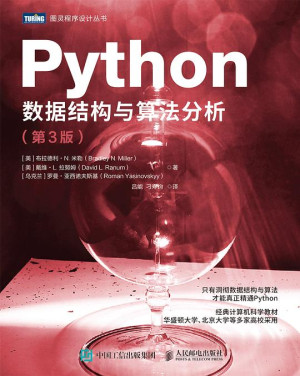前言
本文继续整理CPU调度WALT相关内容,主要整理如下内容:
- WALT是什么?
- WALT 计算?
- WALT 计算数据如何使用?
1. WALT是什么?
WALT:Windows-Assist Load Tracing的缩写:
- 从字面意思来看,是以window作为辅助项来跟踪CPU LOAD;
- 实质上是一种计算方法,用数据来表现CPU当前的loading情况,用于后续任务调度、迁移、负载均衡等功能;
1.1 为什么需要WALT ?
对于一项技术的发展,尤其是一种计算方式的引入,一定是伴随着过去的技术不在适用于当前事务发展的需要,或者这项技术可以让人更懒;
1.1.1 PELT的计算方式的不足?
PELT的引进的时候,linux的主流还在于服务器使用,更多关注设备性能的体现,彼时功耗还不是考虑的重点,而随着移动设备的发展,功耗和响应速度成为被人们直接感知到的因素,成为当前技术发展主要考虑的因素:
- 对于当前的移动设备,在界面处理的应用场景,需要尽快响应,否则user会明显感觉到卡顿;
- 对于当前移动设备,功耗更是一个必须面对的因素,手机需要频繁充电,那销量一定好不了;
- 根据用户场景决定task是否heavy的要求,比如显示的内容不同,其task重要程度也不同,即同一个类别的TASK也需要根据具体情况动态改变;
而基于当前PELT的调度情况(衰减的计算思路),更能体现连续的趋势情况,而对于快速的突变性质的情况,不是很友好:
- 对于快速上升和快速下降的情况响应速度较慢,由于衰减的计算过程,所以实际的Loading上升和下降需要一定周期后才能在数据上反馈出来,导致响应速度慢;
- PELT基于其衰减机制,所以对于一个task sleep 一段时间后,则其负载计算减小,但是如果此时该Task为网络传输这种,周期性的需要cpu和freq的能力,则不能快速响应(因为该计算方式更能体现趋向性、平均效果)
1.2 WALT如何处理
根据上述的原因,我们了解到,当前需要在PELT的基础上(保持其好处),实现一种更能适用于当前需求的计算方式:
- 数据上报更加及时;
- 数据直接体现现状;
- 对算力的消耗不会增加(算力);
1.2.1 WALT 处理
我这里总结了WALT所能(需要)做到的效果:
- 继续保持对于所有Task-entity的跟踪 ;
- 在此前usage(load)的基础上,添加对于demand的记录,用于之后预测;
- 每个CPU上runqueue 的整体负载仍为所有Task统计的sum;
- 核心在于计算差异,由之前的衰减的方式变更为划分window的方式:数据采集更能快速体现实际变化(对比与PELT的趋势),如下为Linux官方的一些资料:
- A task’s demand is the maximum of its contribution to the most recently completed window and its average demand over the past N windows.
- WALT “forgets” blocked time entirely:即只统计runable和running time,可以对于Task的实际耗时有更准确的统计,可以通过demand预测;
- CPU busy time - The sum of execution times of all tasks in the most recently completed window;
- WALT “forgets” cpu utilization as soon as tasks are taken off of the runqueue;
1.2.2 应用补充
- task分配前各个CPU和task负载的统计;
- task migration 迁移
- 大小核的分配;
- EAS 分配;
1.3 版本导入
- linux 4.8.2 之后导入(但是在bootlin查看code,最新5.8仍没有对应文件)
- android 4.4之后导入(android kernel 4.9 中是有这部分的)
2. Kernel如何启用WALT
android kernel code中已经集成了这部分内容,不过根据厂商的差异,可能存在没有启用的情况:
-
打开宏测试:
- menuconfig ==》Genernal setup ==》CPU/Task time and stats accounting ==》support window based load tracking
- 图示:

-
直接修改
- kernel/arch/arm64/config/defconfig中添加CONFIG_SCHED_WALT=y
-
build image 验证修改是否生效:
demo:/sys/kernel/tracing # zcat /proc/config.gz | grep WALT
CONFIG_SCHED_WALT=y
CONFIG_HID_WALTOP=y
- 测试
当前只是在ftrace中可以看到确实有统计walt的数据,但是没有实际的应用来确认具体是否有改善或者其他数据(当然Linux的资料中有一些数据,但是并非本地测试);
3. WALT计算
本小节从原理和code 来说明,WALT采用的计算方式:
- windows 是如何划分的?
- 对于Task如何分类,分别做怎样的处理?
- WALT部分数据如何更新?
- WALT更新的数据如何被调度、EAS使用?
3.1 Windows划分
首先来看辅助计算项window是如何划分的?
简单理解,就是将系统自启动开始以一定时间作为一个周期,分别统计不同周期内Task的Loading情况,并将其更新到Runqueue中;
则还有哪些内容需要考虑?
- 一个周期即window设置为多久比较合适?这个根据实际项目不同调试不同的值,目前Kernel中是设置的标准是20ms;
- 具体统计多少个window内的Loading情况?根据实际项目需要调整,目前Kernel中设置为5个window;
所以对于一个Task和window,可能存在如下几种情况:

ps:ms = mark_start(Task开始),ws = window_start(当前window开始), wc = wallclock(当前系统时间)
- Task在这个window内启动,且做统计时仍在这个window内,即Task在一个window内;
- Task在前一个window内启动,做统计时在当前window内,即Task跨过两个window;
- Task在前边某一个window内启动,做统计时在当前window内,即Task跨过多个完整window;

即Task在Window的划分只有上述三种情况,所有的计算都是基于上述划分的;
3.2 Task 分类
可以想到的是,对于不同类别的Task或者不同状态的Task计算公式都是不同的,WALT将Task划分为如下几个类别:

上图中有将各个Task event的调用函数列出来;
回到顶部
3.2.1 更新demand判断
在更新demand时,会首先根据Task event判断此时是否需要更新:

对应function:
static int account_busy_for_task_demand(struct task_struct *p, int event)
{/* No need to bother updating task demand for exiting tasks* or the idle task. *///task 已退出或者为IDLE,则不需要计算if (exiting_task(p) || is_idle_task(p))return 0;/* When a task is waking up it is completing a segment of non-busy* time. Likewise, if wait time is not treated as busy time, then* when a task begins to run or is migrated, it is not running and* is completing a segment of non-busy time. */// 默认 walt_account_wait_time是1,则只有TASK_WAKE if (event == TASK_WAKE || (!walt_account_wait_time &&(event == PICK_NEXT_TASK || event == TASK_MIGRATE)))return 0;return 1;
}
3.2.2 更新CPU busy time判断
在更新CPU busy time时,会首先根据Task event判断此时是否需要更新:

对应function:
static int account_busy_for_cpu_time(struct rq *rq, struct task_struct *p,u64 irqtime, int event)
{
//是否为idle task or other task? if (is_idle_task(p)) {/* TASK_WAKE && TASK_MIGRATE is not possible on idle task! */// 是schedule 触发的下一个task为idle taskif (event == PICK_NEXT_TASK)return 0;/* PUT_PREV_TASK, TASK_UPDATE && IRQ_UPDATE are left */// 如果是中断或者等待IO的IDLE TASK,是要计算busy time的;return irqtime || cpu_is_waiting_on_io(rq);}//wake 唤醒操作不需要计算;if (event == TASK_WAKE)return 0;//不是IDLE TASK则以下几个类型需要计算if (event == PUT_PREV_TASK || event == IRQ_UPDATE ||event == TASK_UPDATE)return 1;/* Only TASK_MIGRATE && PICK_NEXT_TASK left *///默认是0return walt_freq_account_wait_time;
}
3.3 数据如何更新?(调用逻辑)
前边两个小结已经介绍了Task在window上统计逻辑和不同Task统计不同数据判断,这里具体来看核心调用逻辑,首先上一张图:

这个图是在xmind导出来的结构图,不清楚是否可以放大查看,这里具体介绍流程:
- 入口函数walt_update_task_ravg
- demand更新函数
- cpu busy time 更新函数
回到顶部
3.3.1 入口函数介绍

对应function:
/* Reflect task activity on its demand and cpu's busy time statistics */
void walt_update_task_ravg(struct task_struct *p, struct rq *rq,int event, u64 wallclock, u64 irqtime)
{//判断返回if (walt_disabled || !rq->window_start)return;lockdep_assert_held(&rq->lock);//更新window_start和cum_window_demandupdate_window_start(rq, wallclock);if (!p->ravg.mark_start)goto done;//更新数据:demand和busy_timeupdate_task_demand(p, rq, event, wallclock);update_cpu_busy_time(p, rq, event, wallclock, irqtime);done:// tracetrace_walt_update_task_ravg(p, rq, event, wallclock, irqtime);// 更新mark_start p->ravg.mark_start = wallclock;
}
函数主要做三件事情:
- 更新当前 window start时间为之后数据更新做准备;
- 更新对应task的demand数值,需要注意这里也会对应更新RQ中的数据;
- 更新对应task的cpu busy time占用;
这个函数是WALT计算的主要入口,可以看到调用它的位置有很多,即上图最左侧内容,简单来说就是在中断、唤醒、迁移、调度这些case下都会更新Loading情况,这里不一一详细说明了;
- task awakend
- task start execute
- task stop execute
- task exit
- window rollover
- interrupt
- scheduler_tick
- task migration
- freq change
回到顶部
3.3.2 更新window start
这里主要是在计算之前更新window_start确保rq 窗口起始值准确:

对应function:
static void
update_window_start(struct rq *rq, u64 wallclock)
{s64 delta;int nr_windows;//计算时间delta = wallclock - rq->window_start;/* If the MPM global timer is cleared, set delta as 0 to avoid kernel BUG happening */if (delta < 0) {delta = 0;/** WARN_ONCE(1,* "WALT wallclock appears to have gone backwards or reset\n");*/}if (delta < walt_ravg_window) // 不足一个window周期,则直接返回;return;nr_windows = div64_u64(delta, walt_ravg_window);//计算window数量rq->window_start += (u64)nr_windows * (u64)walt_ravg_window;//统计window_start时间rq->cum_window_demand = rq->cumulative_runnable_avg;//实质还得使用cumulative_runnable_avg
}
回到顶部
3.3.3 更新demand
3.3.3.1 demand主要逻辑:

对应function:
/** Account cpu demand of task and/or update task's cpu demand history** ms = p->ravg.mark_start;* wc = wallclock* ws = rq->window_start** Three possibilities:** a) Task event is contained within one window.* window_start < mark_start < wallclock** ws ms wc* | | |* V V V* |---------------|** In this case, p->ravg.sum is updated *iff* event is appropriate* (ex: event == PUT_PREV_TASK)** b) Task event spans two windows.* mark_start < window_start < wallclock** ms ws wc* | | |* V V V* -----|-------------------** In this case, p->ravg.sum is updated with (ws - ms) *iff* event* is appropriate, then a new window sample is recorded followed* by p->ravg.sum being set to (wc - ws) *iff* event is appropriate.** c) Task event spans more than two windows.** ms ws_tmp ws wc* | | | |* V V V V* ---|-------|-------|-------|-------|------* | |* |<------ nr_full_windows ------>|** In this case, p->ravg.sum is updated with (ws_tmp - ms) first *iff** event is appropriate, window sample of p->ravg.sum is recorded,* 'nr_full_window' samples of window_size is also recorded *iff** event is appropriate and finally p->ravg.sum is set to (wc - ws)* *iff* event is appropriate.** IMPORTANT : Leave p->ravg.mark_start unchanged, as update_cpu_busy_time()* depends on it!*/
static void update_task_demand(struct task_struct *p, struct rq *rq,int event, u64 wallclock)
{u64 mark_start = p->ravg.mark_start;//mark start 可以看到是task 的值;u64 delta, window_start = rq->window_start;//window start是 rq的值;int new_window, nr_full_windows;u32 window_size = walt_ravg_window;//第一个判断条件,ms和ws,即当前task的start实际是否在这个window内; new_window = mark_start < window_start;if (!account_busy_for_task_demand(p, event)) {if (new_window)/* If the time accounted isn't being accounted as* busy time, and a new window started, only the* previous window need be closed out with the* pre-existing demand. Multiple windows may have* elapsed, but since empty windows are dropped,* it is not necessary to account those. */update_history(rq, p, p->ravg.sum, 1, event);return;}// 如果ms > ws,则是case a:将wc-ms,在此周期内的实际执行时间;if (!new_window) {/* The simple case - busy time contained within the existing* window. */add_to_task_demand(rq, p, wallclock - mark_start);return;}//超过 1个window的情况/* Busy time spans at least two windows. Temporarily rewind* window_start to first window boundary after mark_start. *///从ms 到 ws的时间,包含多个完整windowdelta = window_start - mark_start;nr_full_windows = div64_u64(delta, window_size);window_start -= (u64)nr_full_windows * (u64)window_size;//ws 计算到ws_tmp这里:/* Process (window_start - mark_start) first *///先添加最开始半个周期的demandadd_to_task_demand(rq, p, window_start - mark_start);/* Push new sample(s) into task's demand history *///更新historyupdate_history(rq, p, p->ravg.sum, 1, event);if (nr_full_windows)update_history(rq, p, scale_exec_time(window_size, rq),nr_full_windows, event);/* Roll window_start back to current to process any remainder* in current window. */// 还原 window_start window_start += (u64)nr_full_windows * (u64)window_size;/* Process (wallclock - window_start) next *///更新最后的周期,可以看到整体类似于pelt的计算,增加了history的操作;mark_start = window_start;add_to_task_demand(rq, p, wallclock - mark_start);
} //demand计算更新:
static void add_to_task_demand(struct rq *rq, struct task_struct *p,u64 delta)
{//demand需要做一次转换,将实际运行时间,转换为CPU 能力比例,一般就是获取CPU 的capcurr 然后除1024;delta = scale_exec_time(delta, rq);p->ravg.sum += delta;//这里有个判断当sum超过window size的时候修改;if (unlikely(p->ravg.sum > walt_ravg_window))p->ravg.sum = walt_ravg_window;
}
3.3.3.2 update history 逻辑:
update_history 整理:
- 本函数在Task进入一个新的Window的时候调用;
- 更新Task中的demand,根据过往几个Window的情况;
- 同步更新Rq中的Usage,根据当前demand计算值;

对应function:
/** Called when new window is starting for a task, to record cpu usage over* recently concluded window(s). Normally 'samples' should be 1. It can be > 1* when, say, a real-time task runs without preemption for several windows at a* stretch.*/static void update_history(struct rq *rq, struct task_struct *p,u32 runtime, int samples, int event)
{u32 *hist = &p->ravg.sum_history[0];//对应window 指针链接int ridx, widx;u32 max = 0, avg, demand;u64 sum = 0;/* Ignore windows where task had no activity */if (!runtime || is_idle_task(p) || exiting_task(p) || !samples)goto done;/* Push new 'runtime' value onto stack */widx = walt_ravg_hist_size - 1;// history数量最大位置ridx = widx - samples;//计算链表中需要去除的window数量//如下两个for循环就是将新增加的window添加到history链表中,并更新sum值和max值; for (; ridx >= 0; --widx, --ridx) {hist[widx] = hist[ridx];sum += hist[widx];if (hist[widx] > max)max = hist[widx];}for (widx = 0; widx < samples && widx < walt_ravg_hist_size; widx++) {hist[widx] = runtime;sum += hist[widx];if (hist[widx] > max)max = hist[widx];}
// Task中sum赋值;p->ravg.sum = 0;//demand根据策略不同,从history window中计算,我们默认是policy2 就是 WINDOW_STATS_MAX_RECENT_AVG,在过去平均值和当前值中选择大的那个;if (walt_window_stats_policy == WINDOW_STATS_RECENT) {demand = runtime;} else if (walt_window_stats_policy == WINDOW_STATS_MAX) {demand = max;} else {avg = div64_u64(sum, walt_ravg_hist_size);if (walt_window_stats_policy == WINDOW_STATS_AVG)demand = avg;elsedemand = max(avg, runtime);}/** A throttled deadline sched class task gets dequeued without* changing p->on_rq. Since the dequeue decrements hmp stats* avoid decrementing it here again.** When window is rolled over, the cumulative window demand* is reset to the cumulative runnable average (contribution from* the tasks on the runqueue). If the current task is dequeued* already, it's demand is not included in the cumulative runnable* average. So add the task demand separately to cumulative window* demand.*/
//进行runnable_avg参数矫正,前提为并非deadline类型task if (!task_has_dl_policy(p) || !p->dl.dl_throttled) {if (task_on_rq_queued(p))//在runqueue中排队,但是没有实际执行fixup_cumulative_runnable_avg(rq, p, demand);//在rq中添加当前demand和task中记录demand的差值,更新到cumulative_runnable_avgelse if (rq->curr == p)//当前执行的就是这个Taskfixup_cum_window_demand(rq, demand);//在rq中添加demand}
//最后将计算出来的demand更新到Task中;p->ravg.demand = demand;done:trace_walt_update_history(rq, p, runtime, samples, event);return;
}//更新cumulative_runnable_avg的值;
static void
fixup_cumulative_runnable_avg(struct rq *rq,struct task_struct *p, u64 new_task_load)
{
//计算demand和p中记录的demand差值(可能小于0)s64 task_load_delta = (s64)new_task_load - task_load(p);
//添加到rq中rq->cumulative_runnable_avg += task_load_delta;if ((s64)rq->cumulative_runnable_avg < 0)panic("cra less than zero: tld: %lld, task_load(p) = %u\n",task_load_delta, task_load(p));
//fixup_cum_window_demand(rq, task_load_delta);
}//更新cum_window_demand,直接累加传入值
static inline void fixup_cum_window_demand(struct rq *rq, s64 delta)
{rq->cum_window_demand += delta;if (unlikely((s64)rq->cum_window_demand < 0))rq->cum_window_demand = 0;
}//可以看到这里实际更新了:cum_window_demand、cumulative_runnable_avg
//这两个还在如下函数中有更新:就一个+,一个-,
void
walt_inc_cumulative_runnable_avg(struct rq *rq,struct task_struct *p)
{rq->cumulative_runnable_avg += p->ravg.demand;/** Add a task's contribution to the cumulative window demand when** (1) task is enqueued with on_rq = 1 i.e migration,* prio/cgroup/class change.* (2) task is waking for the first time in this window.*/if (p->on_rq || (p->last_sleep_ts < rq->window_start))fixup_cum_window_demand(rq, p->ravg.demand);
}void
walt_dec_cumulative_runnable_avg(struct rq *rq,struct task_struct *p)
{rq->cumulative_runnable_avg -= p->ravg.demand;BUG_ON((s64)rq->cumulative_runnable_avg < 0);/** on_rq will be 1 for sleeping tasks. So check if the task* is migrating or dequeuing in RUNNING state to change the* prio/cgroup/class.*/if (task_on_rq_migrating(p) || p->state == TASK_RUNNING)fixup_cum_window_demand(rq, -(s64)p->ravg.demand);
}//在code中搜索了这两个函数的调用:
//分别在fair\dl\rt\stop_task中调用enqueue时inc,dequeue时dec;
//这部分计算会优先于rq中nr_running进行;
函数的一些注解都在code中添加了,有任何疑问欢迎提出;
3.3.3.3 demand更新函数总结:
则demand更新主要做了如下内容:
- 计算包括task中间包括多个1个window以及多个window的情况,实质就是根据我们上文提到的窗口划分来做的;
- 需要注意的是本函数中window_start和mark_start都是局部变量,实际task内值并未更新,因为之后计算busy time还需要使用;
- demand 实质更新的就是task中ravg.sum以及rq中cumulative_runnable_avg 和cum_window_demand ;
回到顶部
3.3.4 更新cpu busy time
这个函数逻辑画出来更加庞大,主要是针对于不同的case做计算,计算划分都是前文提过的窗口划分,但是具体数值统计会有些许差异:

对应function:
/** Account cpu activity in its busy time counters (rq->curr/prev_runnable_sum)*/
static void update_cpu_busy_time(struct task_struct *p, struct rq *rq,int event, u64 wallclock, u64 irqtime)
{int new_window, nr_full_windows = 0;int p_is_curr_task = (p == rq->curr);u64 mark_start = p->ravg.mark_start; //msu64 window_start = rq->window_start; //wsu32 window_size = walt_ravg_window; //window size u64 delta;//初始变量值获取new_window = mark_start < window_start;// is task period in a new window?if (new_window) {// update nr_full_windowsnr_full_windows = div64_u64((window_start - mark_start),window_size);if (p->ravg.active_windows < USHRT_MAX)p->ravg.active_windows++;}/* Handle per-task window rollover. We don't care about the idle* task or exiting tasks. */if (new_window && !is_idle_task(p) && !exiting_task(p)) {u32 curr_window = 0;if (!nr_full_windows)curr_window = p->ravg.curr_window;//update prevp->ravg.prev_window = curr_window;p->ravg.curr_window = 0;}// 根据event irq判断当前的输入,如果没有对busy造成贡献,则直接返回;if (!account_busy_for_cpu_time(rq, p, irqtime, event)) {/* account_busy_for_cpu_time() = 0, so no update to the* task's current window needs to be made. This could be* for example** - a wakeup event on a task within the current* window (!new_window below, no action required),* - switching to a new task from idle (PICK_NEXT_TASK)* in a new window where irqtime is 0 and we aren't* waiting on IO */if (!new_window)return;/* A new window has started. The RQ demand must be rolled* over if p is the current task. */if (p_is_curr_task) {u64 prev_sum = 0;/* p is either idle task or an exiting task */if (!nr_full_windows) {prev_sum = rq->curr_runnable_sum;}rq->prev_runnable_sum = prev_sum;rq->curr_runnable_sum = 0;}return;}//对应task在当前window内启动,对类型做判断(这个是核心),然后计算时间更新if (!new_window) {/* account_busy_for_cpu_time() = 1 so busy time needs* to be accounted to the current window. No rollover* since we didn't start a new window. An example of this is* when a task starts execution and then sleeps within the* same window. *///判断:不是中断 或者 不是idle 或者 等待IOif (!irqtime || !is_idle_task(p) || cpu_is_waiting_on_io(rq))delta = wallclock - mark_start;elsedelta = irqtime;//换算时间增加curr上delta = scale_exec_time(delta, rq);rq->curr_runnable_sum += delta;if (!is_idle_task(p) && !exiting_task(p))p->ravg.curr_window += delta;return;}// cur window 内task有做事情,但是传入参数并非该task,一般来说就是中断;if (!p_is_curr_task) {/* account_busy_for_cpu_time() = 1 so busy time needs* to be accounted to the current window. A new window* has also started, but p is not the current task, so the* window is not rolled over - just split up and account* as necessary into curr and prev. The window is only* rolled over when a new window is processed for the current* task.** Irqtime can't be accounted by a task that isn't the* currently running task. *///整体分割为两步计算,prev & currif (!nr_full_windows) {/* A full window hasn't elapsed, account partial* contribution to previous completed window. */delta = scale_exec_time(window_start - mark_start, rq);if (!exiting_task(p))p->ravg.prev_window += delta;} else {/* Since at least one full window has elapsed,* the contribution to the previous window is the* full window (window_size). */delta = scale_exec_time(window_size, rq);if (!exiting_task(p))p->ravg.prev_window = delta;}rq->prev_runnable_sum += delta;/* Account piece of busy time in the current window. */delta = scale_exec_time(wallclock - window_start, rq);rq->curr_runnable_sum += delta;if (!exiting_task(p))p->ravg.curr_window = delta;return;}//运行的函数if (!irqtime || !is_idle_task(p) || cpu_is_waiting_on_io(rq)) {/* account_busy_for_cpu_time() = 1 so busy time needs* to be accounted to the current window. A new window* has started and p is the current task so rollover is* needed. If any of these three above conditions are true* then this busy time can't be accounted as irqtime.** Busy time for the idle task or exiting tasks need not* be accounted.** An example of this would be a task that starts execution* and then sleeps once a new window has begun. */if (!nr_full_windows) {/* A full window hasn't elapsed, account partial* contribution to previous completed window. */delta = scale_exec_time(window_start - mark_start, rq);if (!is_idle_task(p) && !exiting_task(p))p->ravg.prev_window += delta;delta += rq->curr_runnable_sum;} else {/* Since at least one full window has elapsed,* the contribution to the previous window is the* full window (window_size). */delta = scale_exec_time(window_size, rq);if (!is_idle_task(p) && !exiting_task(p))p->ravg.prev_window = delta;}/** Rollover for normal runnable sum is done here by overwriting* the values in prev_runnable_sum and curr_runnable_sum.* Rollover for new task runnable sum has completed by previous* if-else statement.*/rq->prev_runnable_sum = delta;/* Account piece of busy time in the current window. */delta = scale_exec_time(wallclock - window_start, rq);rq->curr_runnable_sum = delta;if (!is_idle_task(p) && !exiting_task(p))p->ravg.curr_window = delta;return;}//中断if (irqtime) {/* account_busy_for_cpu_time() = 1 so busy time needs* to be accounted to the current window. A new window* has started and p is the current task so rollover is* needed. The current task must be the idle task because* irqtime is not accounted for any other task.** Irqtime will be accounted each time we process IRQ activity* after a period of idleness, so we know the IRQ busy time* started at wallclock - irqtime. */BUG_ON(!is_idle_task(p));mark_start = wallclock - irqtime;/* Roll window over. If IRQ busy time was just in the current* window then that is all that need be accounted. */rq->prev_runnable_sum = rq->curr_runnable_sum;if (mark_start > window_start) {rq->curr_runnable_sum = scale_exec_time(irqtime, rq);return;}/* The IRQ busy time spanned multiple windows. Process the* busy time preceding the current window start first. */delta = window_start - mark_start;if (delta > window_size)delta = window_size;delta = scale_exec_time(delta, rq);rq->prev_runnable_sum += delta;/* Process the remaining IRQ busy time in the current window. */delta = wallclock - window_start;rq->curr_runnable_sum = scale_exec_time(delta, rq);return;}BUG();
}
细节内容在函数中注释了,这里来简单总结下:
- 根据不同Task类型做不同busytime时间的计算;
- 核心计算方式均相同,只是具体数值差异;
- 更新数据为
Task中prev_window、curr_window
rq中prev_runable_sum、curr_runnable_sum
3.3.5 irq load 相关调用统计
3.3.5.1 与irq相关的三个变量:
cur_irqload:当前Task的irqload,即执行时间
avg_irqload:当前rq的平均irqload,这个值与中断频率相关,逐步衰减,是个累加值;
u64 irqload_ts:上次计算walt irqload的时间,通过这个值来确认中断频次;
3.3.5.2 调用逻辑
sched_init时 三个值被设置为0,前边已经研究过了,这东西是在中断时被调用,具体来看:
void walt_account_irqtime(int cpu, struct task_struct *curr,u64 delta, u64 wallclock)
{struct rq *rq = cpu_rq(cpu);unsigned long flags, nr_windows;u64 cur_jiffies_ts;raw_spin_lock_irqsave(&rq->lock, flags);/** cputime (wallclock) uses sched_clock so use the same here for* consistency.*///计算从获取wallclock到执行到这里的差值更新,即做矫正;//这里需要跟踪delta传入时值,sched_clock_cpu - irq_start_time//即delta是irq的执行时间;delta += sched_clock() - wallclock;cur_jiffies_ts = get_jiffies_64();//如果是IDLE task则做walt相关计算更新,这里是获取的当前值作为wallclock,delta即irq执行timeif (is_idle_task(curr))walt_update_task_ravg(curr, rq, IRQ_UPDATE, walt_ktime_clock(),delta);//计算两次中断统计之间的时间,这里nr_windows是tick数nr_windows = cur_jiffies_ts - rq->irqload_ts;//这里是指这个CPU上触发中断的频率,以10个tick作为判断依据,假设HZ设置为250,则一个tick为4msif (nr_windows) {if (nr_windows < 10) {//如果经过的时间差值在10以内,则avg_irqload衰减为原来的3/4/* Decay CPU's irqload by 3/4 for each window. */rq->avg_irqload *= (3 * nr_windows);rq->avg_irqload = div64_u64(rq->avg_irqload,4 * nr_windows);} else {//如果经过的时间差值超过10,则avg_irqload忽略不计,直接记为0;rq->avg_irqload = 0;}//累加当前的irqloadrq->avg_irqload += rq->cur_irqload;rq->cur_irqload = 0;}rq->cur_irqload += delta;
//irqload_ts为当前值,目前搜索irqload_ts只有这两个位置有更新使用,则说明ts是指上次irq中断统计的时间 rq->irqload_ts = cur_jiffies_ts;raw_spin_unlock_irqrestore(&rq->lock, flags);
}
account_irq_enter_time/account_irq_exit_time ==> irq_account_irq ==> walt_account_irqtime
这个过程还比较简单:
- 中断进入和退出的时候都会统计数据;
- 统计数据即中断执行时间;
- rq的时间根据中断进入的频率累加不同;
3.3.5.3 irqload使用的第一个场景
判断cpu的irq load情况,直接上code:
#define WALT_HIGH_IRQ_TIMEOUT 3u64 walt_irqload(int cpu) {struct rq *rq = cpu_rq(cpu);s64 delta;delta = get_jiffies_64() - rq->irqload_ts;/** Current context can be preempted by irq and rq->irqload_ts can be* updated by irq context so that delta can be negative.* But this is okay and we can safely return as this means there* was recent irq occurrence.*/
//这个计算是避免被竞争抢占后delta值发生变化,至于这里为什么是3,目前还有疑惑?if (delta < WALT_HIGH_IRQ_TIMEOUT)return rq->avg_irqload;elsereturn 0;
}//这个函数是在find_best_target,即在migirate时找到下一个CPU时判断负载;
int walt_cpu_high_irqload(int cpu) {return walt_irqload(cpu) >= sysctl_sched_walt_cpu_high_irqload;//这个值默认是10ms
}3.4 关键结构体
- rq //在runqueue中添加部分数据统计
- task_struct //在task_struct中添加对应变量
- ravg //与这个计算相关的结构
3.4.1 rq

对应的结构定义:
struct rq {...#ifdef CONFIG_SCHED_WALTu64 cumulative_runnable_avg;u64 window_start;u64 curr_runnable_sum;u64 prev_runnable_sum;u64 nt_curr_runnable_sum;u64 nt_prev_runnable_sum;u64 cur_irqload;u64 avg_irqload;u64 irqload_ts;u64 cum_window_demand;
#endif /* CONFIG_SCHED_WALT */...};
3.4.2 task_struct

struct task_struct {...#ifdef CONFIG_SCHED_WALTstruct ravg ravg;/** 'init_load_pct' represents the initial task load assigned to children* of this task*/u32 init_load_pct;u64 last_sleep_ts;
#endif...
}
/* ravg represents frequency scaled cpu-demand of tasks */
struct ravg {/** 'mark_start' marks the beginning of an event (task waking up, task* starting to execute, task being preempted) within a window** 'sum' represents how runnable a task has been within current* window. It incorporates both running time and wait time and is* frequency scaled.** 'sum_history' keeps track of history of 'sum' seen over previous* RAVG_HIST_SIZE windows. Windows where task was entirely sleeping are* ignored.** 'demand' represents maximum sum seen over previous* sysctl_sched_ravg_hist_size windows. 'demand' could drive frequency* demand for tasks.** 'curr_window' represents task's contribution to cpu busy time* statistics (rq->curr_runnable_sum) in current window** 'prev_window' represents task's contribution to cpu busy time* statistics (rq->prev_runnable_sum) in previous window*/u64 mark_start; // marks the beginning of an event (task waking up, task starting to execute, task being preempted) within a windowu32 sum, demand; // sum : how runable a task has benn within current window; demand: u32 sum_history[RAVG_HIST_SIZE_MAX]; // u32 curr_window, prev_window;u16 active_windows;
};
#endif![[ Netty ] 通过Netty聊天业务来加深理解Netty运行以及网络编程.](https://img2024.cnblogs.com/blog/3480200/202501/3480200-20250105164353407-1635775864.png)









